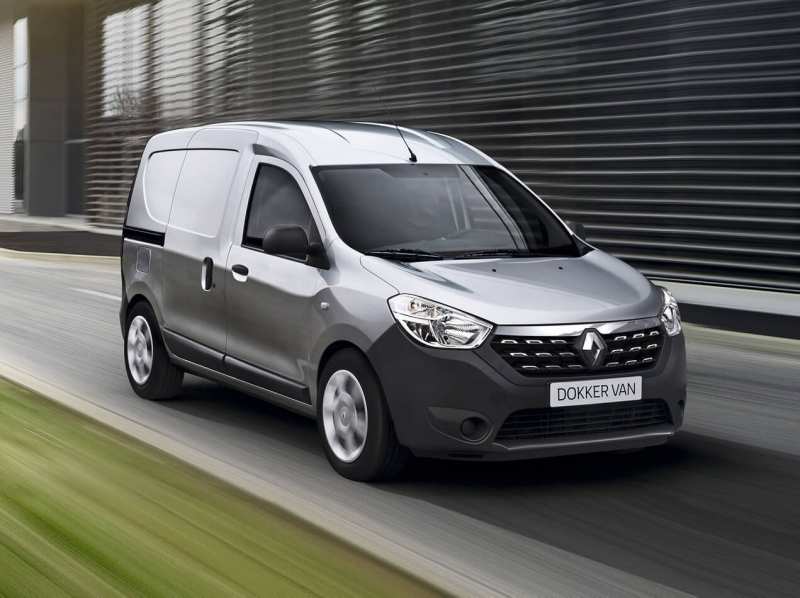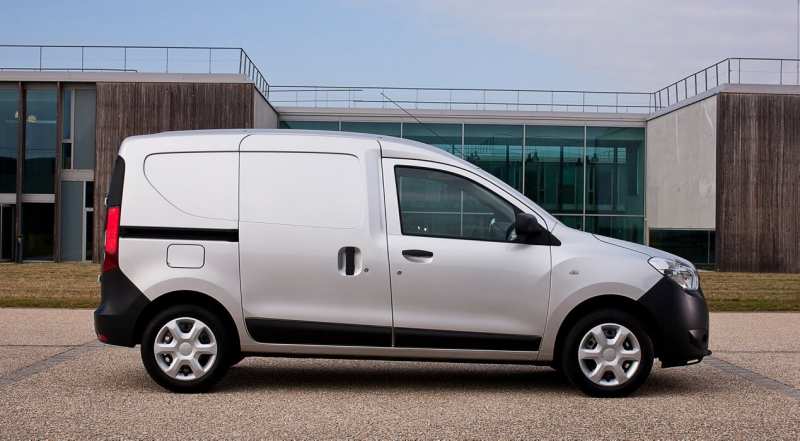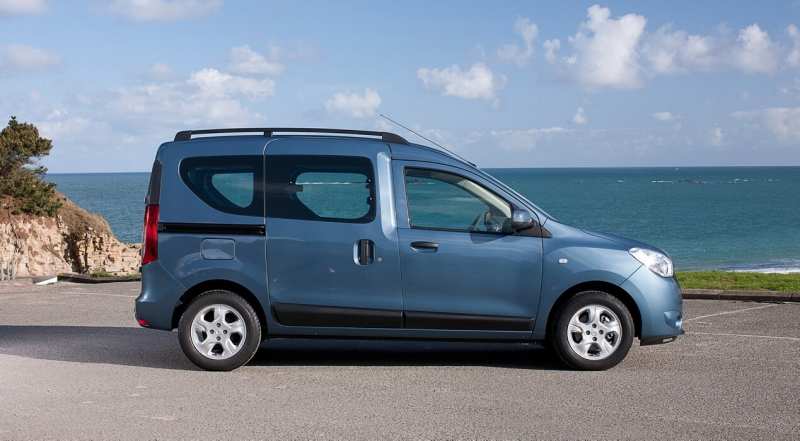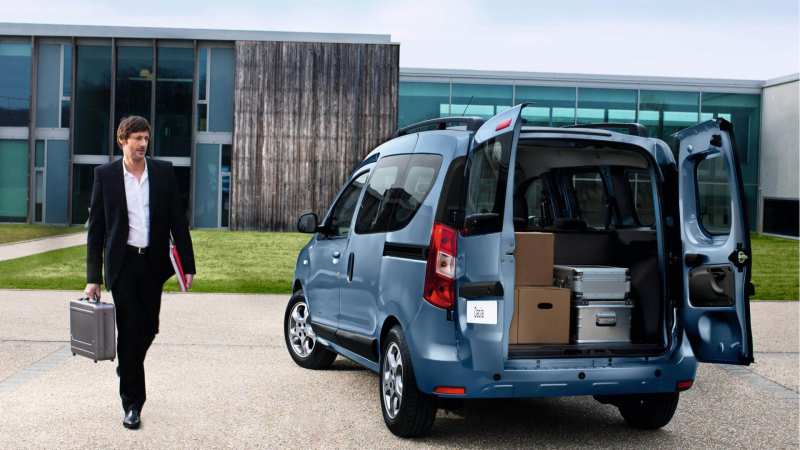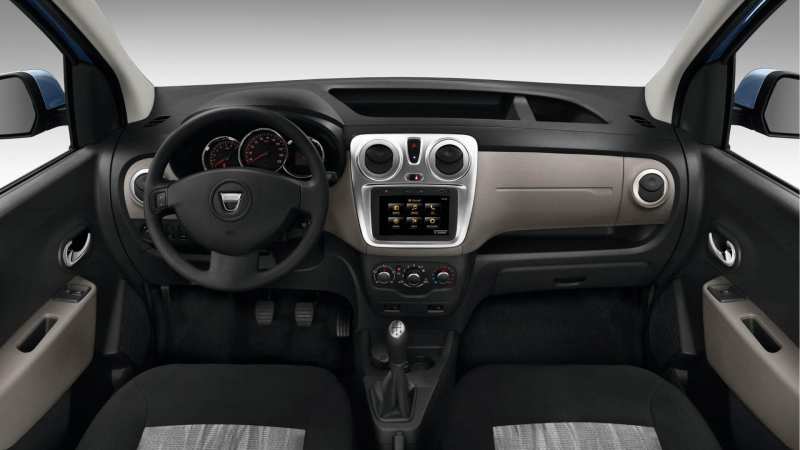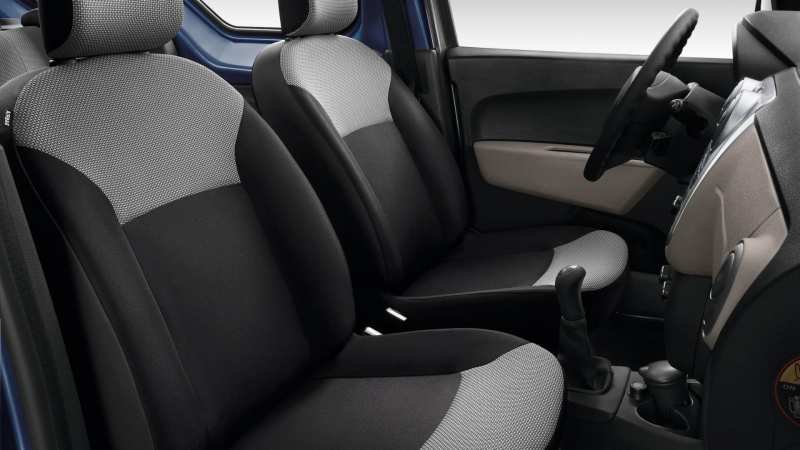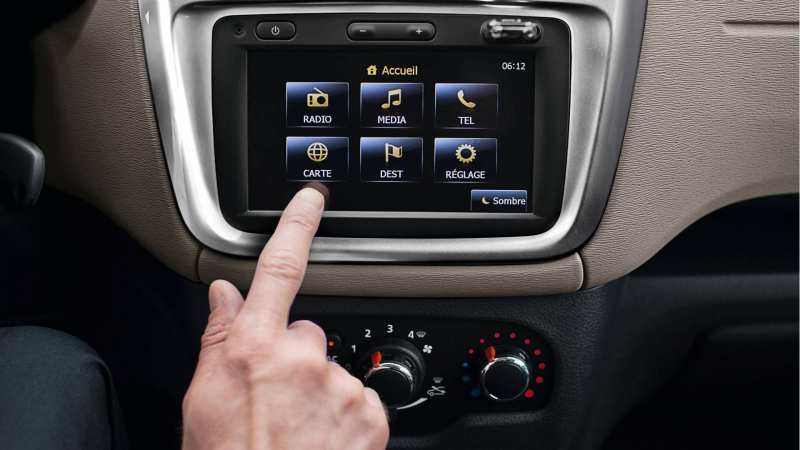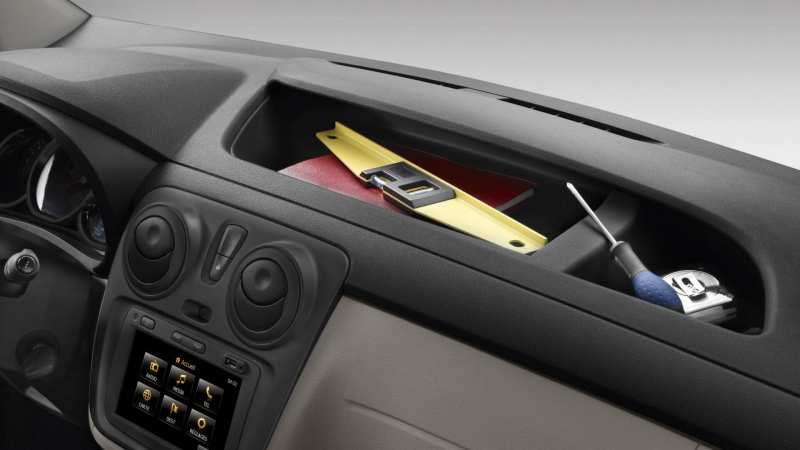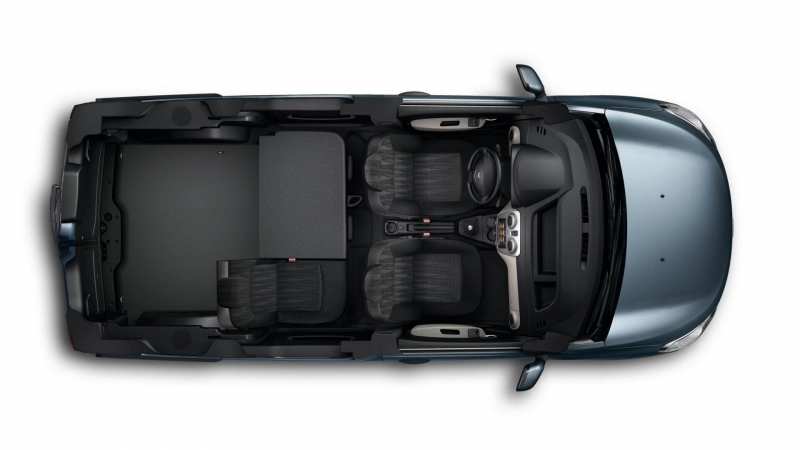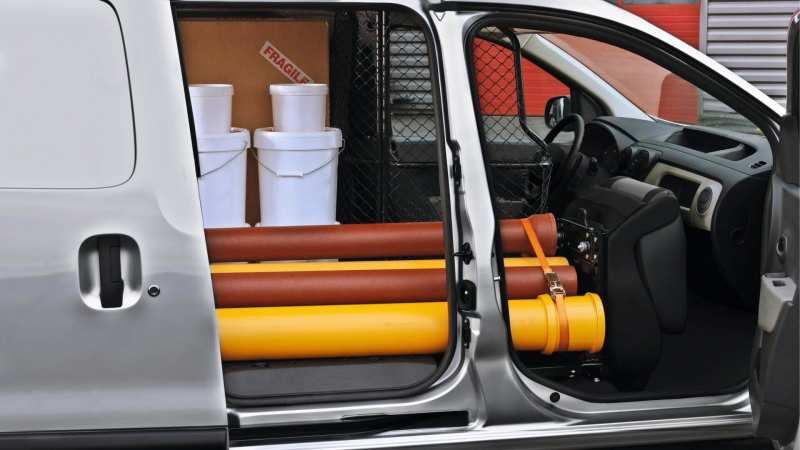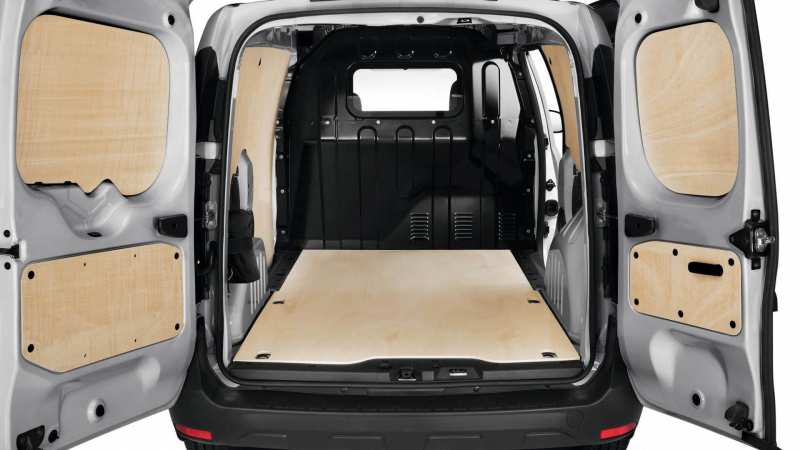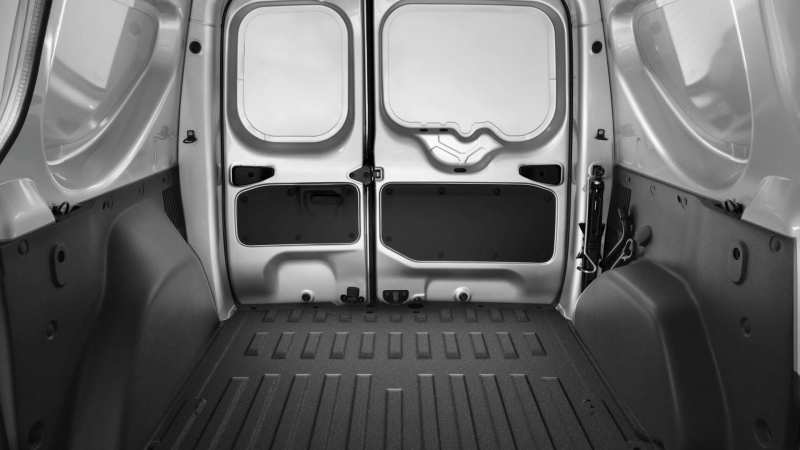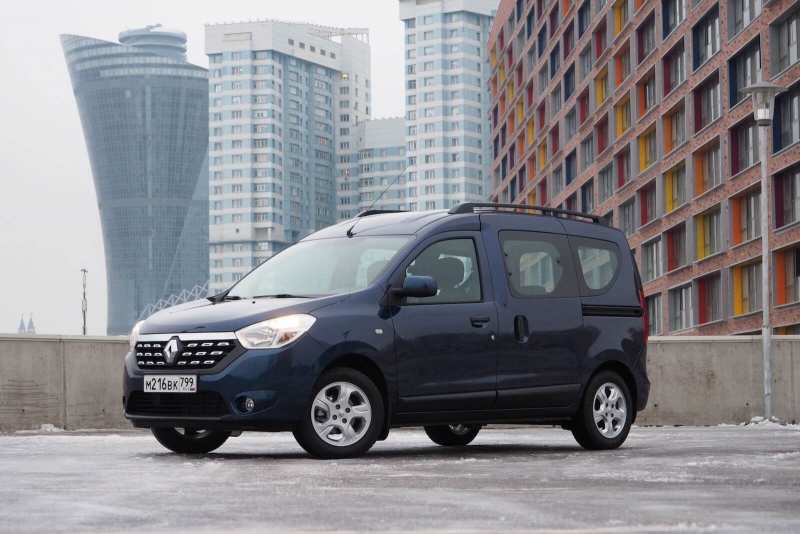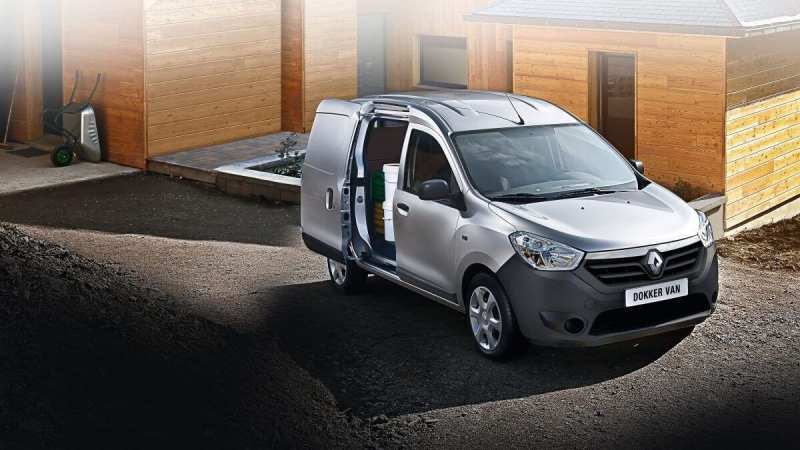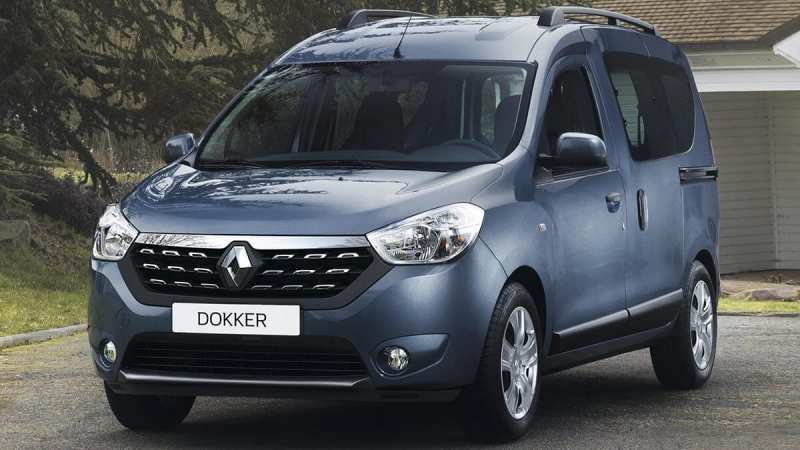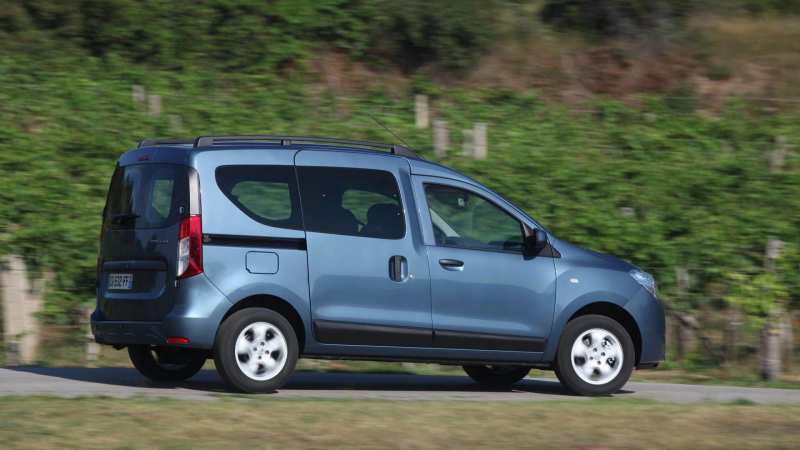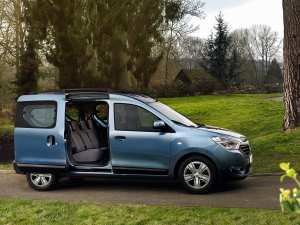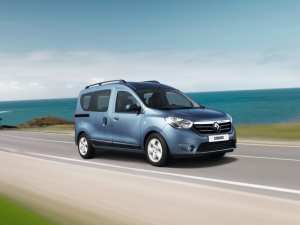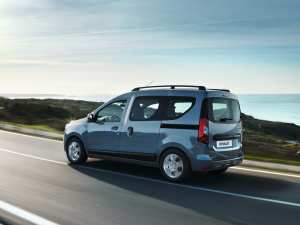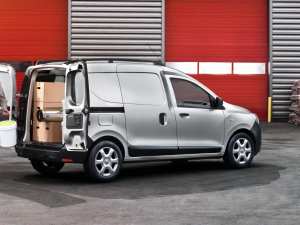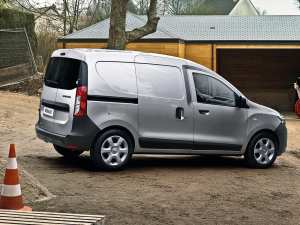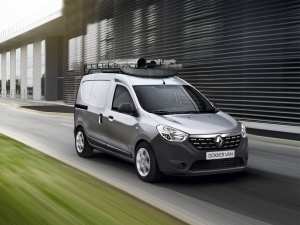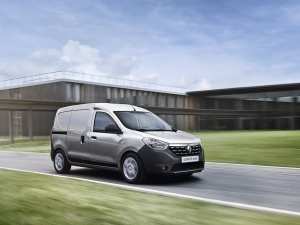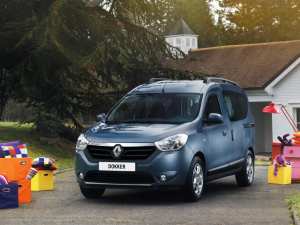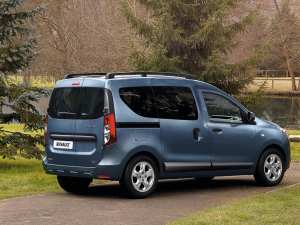Renault Dokker
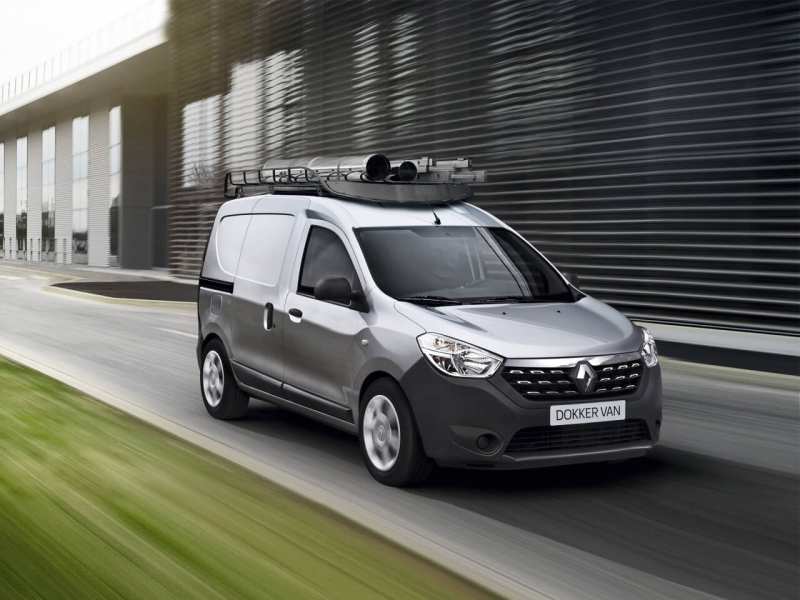
Renault Docker is a front-wheel-drive multi-purpose vehicle, which is available in truck and passenger versions. The first version is designed to transport small cargo in or outside the city limits, and the second version serves not only as a “family car”, but also as a “delivery heel”. The whole model range is Renault.
Car history
The history of this car began not so long ago, in 2012, when the world premiere (under the brand name “Dacia”) took place during the car showroom in Casablanca. For today Renault Dokker has perfectly joined the European arena. Practical car is purchased every year by about 25,000 drivers. The car represents the LAV class (Leisure Activity Vehicle).
In the first month of 2017, Renault Dokker underwent a small update, which affected only the visual transformation. In the French car, experts have adjusted the exterior and interior, but left the technical characteristics unchanged. At the end of 2017, the “heel” finally began to sell on the Russian market.
Interesting! The name of this machine comes from the word combination “dock worker”, which, if to translate it means “working dock” (which hints at its high load capacity).
Exterior
Although the car doesn’t have a variety of decorations, it still looks nice. There is not much space for the front end. It has a short hood cover, which is decorated with protrusions on the sides. Next you can notice the massive headlights, equipped with a large trapezoidal grille, trimmed with plastic. The lower part of the bumper is also equipped with a pleasant appearance.
There is also another air intake system, made in the form of a wide strip. It is designed to supply air to the underside of the bumper. On the sides of it there are barely noticeable in the photo Renault Docker round fog lights. Although the car cannot be called too attractive (as there are no fancy distinguishing parameters), but it is not quite mediocre.
The laconic appearance is perfectly intertwined with the purpose of the machine. And this is a weighty argument in the choice of a working car, as it is possible to reduce the cost of the vehicle.
The side part of the French Renault Dokker Van also looks modern, and also has a stylish appearance, regardless of its field of application. The jewellery here includes large glasses, which are separated by body supports. They offer a beautiful view of everything that happens outside the car. There is a slightly undulating relief.
As for the wheel arches, they are impressive and have a large outreach. The bodywork as well as the central part of the doors received plastic inserts. The height of the road clearance was quite confident 190 millimeters. In “combat” condition the single-volume model can weigh from 1,152 to 1,205 kilograms, depending on the chosen modification. Standard 15-inch steel “rollers” are placed in the wheel arches.
It is a pity that the maximum equipment received the left sliding door, but the basic one is not. A little offended, but it will not be possible to install it as a separate option. The rear part is typical for vans. The only thing that can be highlighted is the design of the doors. Renault Docker 2019 has double doors, while most of its opponents have single-type doors.
Under the glass, Renault’s engineers took about 1/3 of the back area. As for the overall optics, it was placed on racks. At the bottom, the rear bumper is crowned with a small protrusion with fog lights and stop lamps. Under the bottom of the Renault Dokker Stepway there is an exhaust pipe. Renault Dokker Van is a car, during the creation of which, the company sought to focus on the functional qualities of the machine, but did not forget about the theme of appearance.
A group of engineers and designers should be praised for this. The functional “heel” of Renault Docker is equipped with individuality, which simply will not allow the “Frenchman” to remain unnoticed. In addition, the car is adapted to the Russian roads, combines the practical qualities of a small truck with the sophistication of a light truck.
The style of Renault Docker Van and Renault Docker is similar to that of a passenger, but different in terms of the design of the back and side, which is quite logical. Renault Dokker Van has a separate cargo “capsule” instead of passenger seats.
Interior
Due to the fact that the car is far from being a premium one, it is rather scarce inside here, but only more than enough for regular city trips, as well as for long journeys. The new version of Renault Dokker 2019 is equipped with a interior trim made of good quality fabric and plastic, which is stylized as metal.
There are also versions with artificial leather. The Renault Docker multimedia system is simple, but there is. Besides, the salon of French “heel” possesses a decent set of options and assistants.
The central console wasn’t filled very well by the engineers. It is equipped with two ventilation deflectors, which are made in round form. Between them you can see the keys to activate the “emergency” and other functions. Under these controls, French engineers placed a 7-inch multimedia display of compact size, controlled by buttons installed around its perimeter.
In addition, there is room for a panel with washers to adjust the air conditioner with heater in the basic version. Top-of-the-range equipment includes installation of a full-fledged climatic regulator. The console is finished with the installation of a cigarette lighter and a huge opening, which can easily accommodate various things.
More simply the tunnel itself was made. It has space only for the gearshift knob, “handbrake”, a few buttons to control functional systems and a pocket for things. It’s a pity, but the armrest in Renault Docker 2019 isn’t installed in any form, and it’s missing here.
The extended version will allow you to find two cupholders here. It is clear that the passenger version differs to a greater extent in the presence of glazing and installed seats. Almost everything else is the same for the two modifications of the French “heel”.
Some models of Renault Docker have a passenger seat near the driver’s seat, which is designed as a transformer. If necessary, it can be easily folded together to make room for extra space.
As for the Renault Dokker 2019 steering wheel, it is also easy to finish. The steering wheel has a large sheep barrel, thick synthetic leather braiding and wide spokes. Unfortunately, the design department decided not to equip wide spokes with multimedia buttons, which would help the driver while driving.
Renault Docker’s Device received three large wells filled with analogue sensors of different content. When it’s dark, all these sensors are highlighted in blue or white. Despite the huge size of the car, only 5 seats are provided for people. Such seats are made of a good fabric. It is a pity that inside there is a very hard material which negatively influences sensations at long driving.
Additional options include a system of front seat heating, as well as adjustment of the position of the seats mechanically. As for the rear seats, the design department has not prepared anything there, except the central part of the backrest, which tilts. The real pride of the French Renault Docker 2019 is its spacious luggage compartment.
It has a capacity of up to 800 litres as standard. However, if necessary, this volume can be increased by folding the second row of seats, which provides almost 3,000 litres of usable space. Access to the luggage compartment is made possible by swinging, multi-sized wicket doors that open 180 degrees. A full-size spare wheel has been installed under the renovated Renault Docker.
<Interestingly, inside the Renault Dokker 2019 it is possible to install intermediate partitions: deaf, lattice type or delimiter with glass.
Specifications
Powertrain
A practical Renault Docker car is available with four engines to choose from. Two of them run on gasoline, and the rest are diesel versions. The role of the basic gasoline engine is performed by a 1.6-liter eight-valve atmospheric engine, which develops 85 horsepower (134 Nm).
Then comes the turbine 1.2-liter “engine”, which received a 16-valve gas distribution mechanism. All this allows the upgraded machine to produce 115 “horses” (190 Nm). Gasoline engines need 6.2-7.5 liters for every 100 km in combined mode.
The diesel list included a four-cylinder, 1.5-liter turbocharged engine. This version is equipped with Common Rail fuel injection and has an 8-valve structure. This engine can develop 75-90 hp (180-200 Nm). The fuel appetite of diesel power plants is an average of 4.5 litres for every 100 kilometers. The fuel tank volume is 50 litres.
Transmission
Transmit all the torque from the engine to the front wheels of the Renault Dokker 2019 5- or 6-speed manual gearboxes. For the “Frenchman”, the drive is only available on the front wheels. According to the chosen modification, the maximum speed of the vehicle is 160-179 kilometres per hour. In order to accelerate to the speed mark of 100 km/h, the machine needs 10.6-14.5 seconds.
Carriage
Renault Docker decided to use a front-wheel drive platform called “M0” as the basis. It implies a transverse arrangement of the power unit. The front wheels of the updated Renault Dokker are equipped with an independent suspension type McPherson, and the rear wheels are equipped with a semi-independent system with an elastic H-beam. Both front and rear are equipped with transverse stability stabilizers.
The French compact van is equipped with a rack and pinion steering mechanism, which received a hydraulic power steering. The braking system of the machine is equipped with ventilated disc brakes at the front, as well as drum mechanisms at the rear. Already basic equipment includes the work of electronic systems ABS, EBD.
Safety
The French company has always stated that the comfort of the driver and passengers, as well as the topic of safety is their priority. With the help of technological solutions used in Renault Docker, the level of active and passive safety during movement is increased. The car is equipped with an anti-lock braking system (ABS).
This system improves the machine’s handling during emergency braking. The system prevents the wheels from locking up and maintains maximum traction. During simultaneous operation with the emergency braking system, the braking distance is significantly reduced.
The machine is also equipped with front airbags. Renault Docker received front airbags for the driver and the passenger sitting next to him. The passenger airbag can be deactivated for safe installation of the child seat. There is also a speed limiter. The cruise control system operates with a speed limiter and is controlled by the buttons on the steering wheel.
It allows you to set the desired speed of the vehicle or the maximum speed of the vehicle. Thanks to the ESP system, the driver can control the trajectory of the vehicle even on slippery terrain. Stability stabilisation technology enables the Renault Dokker to be monitored during difficult driving conditions.
The ISOFIX system is also available. It is a child seat installation system that helps to install child seats on the 2nd row of seats according to international safety standards. This system minimizes the possibility of errors during installation and increases the protection properties.
The French have provided for the installation of daytime running lights and fog lights. Daytime running lights and fog lights provide the driver with maximum confidence when visibility is poor.
Complete sets and prices
For Renault Docker, there are 3 sets of accessories that can be selected when buying a heel. A gasoline atmospheric engine and a turbocharged diesel variant are available as a power pack. There are only 3 options: Access, Life and Drive. The cheapest equipment is equipped with:
- Two front airbags;
- 15-inch steel rollers
- Hydraulic power steering;
- AbS;
- Electronic system
- Crankcase steel protection;
- Rear window heating function;
- Daytime running lights and stuff;
- Sliding side doors;
- Audio preparation;
- Rear glazed swinging doors.
Such a version is estimated from 819 000 rubles. However, a one-volume version will cost dealers at least 989,990 rubles. Top-of-the-range equipment will cost from 920,990 rubles. Except the above mentioned equipment is added:
- Railings on the roof;
- Roller caps;
- Board computer;
- Conditioner;
- Two power windows;
- External mirrors with electric drive and heating;
- Cruise control;
- Central lock with remote control;
- Fog lights and other chips
- Navigation system;
- Adjustment of the chair in height and backrest position;
- Swivel castor height adjustment;
- Luggage rack;
- Shelf over glass, additional compartments.
Tuning
Almost every car owner is striving to improve his car somehow, whether it’s outwardly or technically. Owners of Renault Docker also belong to such motorists. In reality, there are a lot of ways to improve your car.
The external tuning of Renault Dokker includes the purchase and installation of improved roof rails, better optics, towbar, protection of wheel arches, window and hood deflectors. In addition, you can purchase a kangaroo to give your car a more off-road appearance.
Some Renault Docker owners are buying new rims with a more interesting design. If you are tired of the basic body color, you can repaint the car in more interesting colors or use 3D-painting with some pictures. In the cabin you can almost immediately buy suitable covers, armrest, rugs and so on.
If basic lighting is lacking, craftsmen install additional lighting, e.g. with LED fillings. For those who like to listen to quality music, you can advise to improve the music system.
Nobody canceled the chip-tuning Renault Docker, which allows you to significantly improve the power of the powertrain and dynamic characteristics. Simply put, tuning Renault Dokker depends directly on imagination and a monetary stock of each driver.
Comparison with competitors
Despite the fact that compact vanes in Russia are not very popular models, the demand for them begins to grow, as many motorists tend to choose a car practical, which is at least a little like a crossover. However, in the car market, except for Dokker, there is Volkswagen Caddy, Fiat Doblo, Renault Kangoo and Citroen Picasso.
Each machine has its own advantages and disadvantages, and therefore the choice must be made on the basis of personal interests and financial resources. For example, someone likes the German quality, rigor and heavy-duty powertrains, so they will choose Volkswagen Cuddy. But others may prefer practicality and a lower price tag Fiat Doblo. The choice is made by everyone.
Owner’s Comments
There are many reviews on the internet from the owners of a Renault Dokker van or Van. Almost all car owners have a pleasant feeling about the model. Drivers note the availability of modern equipment, beautiful shape, reliability and low cost. For work also good help will become rather solid height of road clearance, internal volume, efficiency, a suspension bracket.
By the way, the suspension itself is a bit harsh, it shakes a lot on potholes, but everything is fine on a flat road. The brake system works well. The quality of seats in general is not bad, to sit comfortably, but still there is not enough lumbar support for the seats. During long journeys, the back will definitely get tired.
Finishing materials are inexpensive, so do not expect much from the cabin. The visibility level is low, the stands are too wide, and the side mirrors show insufficient “picture”. Although the quality of noise insulation is not perfect, but inside the updated Renault Docker 2019 is not noisy, but the work of the power plant can be heard at any speed.
Judging by the feedback from Renault Dokker owners, the diesel engines have good dynamics and a good “fuel appetite”. In general, the car has a good price/quality ratio.
Pluses and minuses
Pluses cars
- Nice, modern appearance;
- Adequate ground clearance height;
- Comfortable side door;
- Spacious and spacious salon;
- Wide interior transformation possibilities;
- Great luggage compartment;
- Good security level;
- Heavy-duty powertrain;
- Diesel options are not as voracious in urban mode;
- Nice suspension;
- Pretentiousness to our fuel;
- Inside there are many different compartments for different trifles.
Cons of a car
- The left-hand sliding door is not even available as an option;
- No four-wheel drive;
- Inside finishing materials leave much to be desired;
- Uncomfortable seats, practically without side support;
- Low quality of noise insulation;
- Gasoline engines consume a lot of gasoline in the urban cycle.
Tooths
So, how’d the French Renault Docker 2019 come out? The car does not claim to be the most functional and comfortable car, but has all the necessary qualities. In addition, it is important not to forget what price niche this vehicle is in.
Renault Dokker 2019 has a stylish, modern design, a rather high level of road clearance, a comfortable and practical sliding door, which greatly simplifies the process of boarding / disembarking, as well as loading / unloading luggage. The docker is a real French “heel”.
Inside us, we do not meet the highest quality materials, but often use this machine for work, so these criteria are relegated to the background. Although it is impossible to say that the Renault Docker van looks ascetic. It has a convenient, informative dashboard, modern touch screen display, located on the central console. Seats are not the most convenient, but again, do not forget about the cost of Renault Dokker.
Here that much at “heel”, so it is free space. It as on the first, and on the second row is enough. In addition, the car has received a really huge luggage compartment, which can be increased if necessary. The degree of safety is habitually high for the French.
The engines are not the fastest, but they do their job well, especially in diesel engines. The suspension is a bit stiff, but it feels confident when the car is loaded and during corners.
In general, the French were able to accurately improve their model, without changing the cardinally and so successful appearance. They managed to do it – the car is still relevant in many markets, which can be attributed to the secondary.
We advise you to read the article: History of Renault Company


